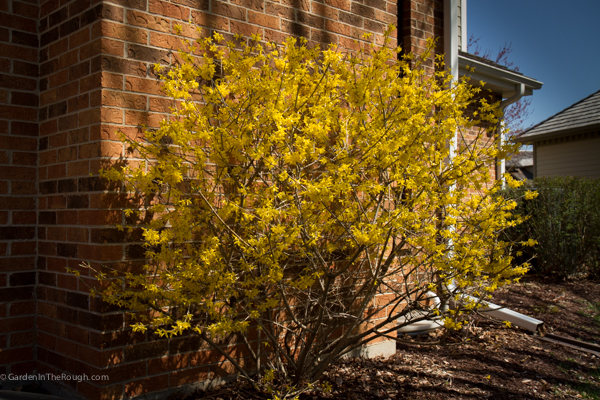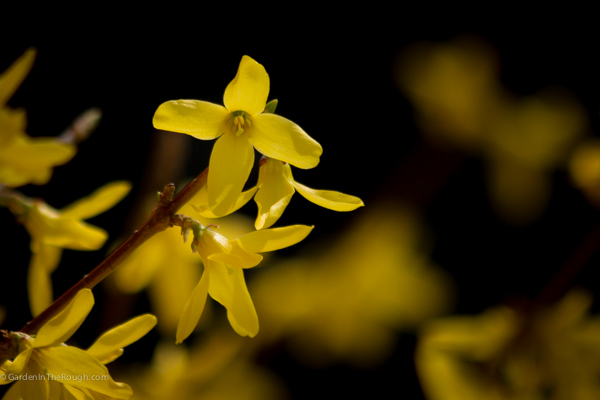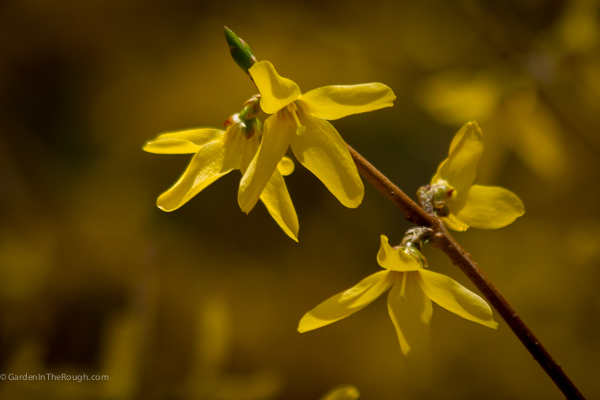One of the joys of spring is the reappearance of a lush green lawn. Amazingly, the grass survived the winter and is now ready to take in the sunshine. Unfortunately, so are the weeds, specifically crabgrass and dandelions. With a little preventative action, these weeds can be kept to a minimum. Here’s how forsythia can help.
Weed Preventers versus Killers—When to Apply?
Crabgrass is a seasonal weed that grows from seeds produced the previous summer (the crabgrass plant dies off in the winter). The seeds survive the winter and germinate in early spring. A crabgrass preventer, or preemergent herbicide, forms a barrier on the soil that prevents sprouting seeds from sending roots into the soil. The best time to apply a crabgrass preventer is when forsythia bushes are in full bloom, usually sometime during the month of April in northern Illinois. Why? Crabgrass seed germination begins when soil temperatures reach 62 degrees F at a depth of 1-2 inches, just after most of the forsythia blooms have dropped. Applying crabgrass preventer when forsythia is in full bloom ensures the treatment has been applied BEFORE germination begins. After the crabgrass preventer has been applied, remember not to rake or aerate, which will compromise the barrier. Also, wait several weeks before starting new grass seed—most crabgrass preventers also prevent grass seeds from germinating! Read the label on the crabgrass preventer to be sure.
Dandelions are perennial weeds that grow from root systems established the previous year. They are not affected by crabgrass preventers. Instead, they are controlled using weed killers. Weed killers work by coming into contact with the leaves, which is how the weed killer is absorbed. Weed killers must be applied when dandelions are actively growing. The best time to apply weed killers is when the weather is warmer, usually well into May and well after forsythia blooms have dropped. Remember not to mow first because this will remove some of the leaves.
Can’t stand those early spring dandelions? Skip the chemicals and dig the dandelions up by hand, preferably before the dandelion blooms have turned to seed. I like to use a weeder with a sharpened fork tip. Place the tip at the base of the dandelion, just under the soil, and lift. The dandelion and a good portion of the root should pop right out.
For further reading, check out these links:
http://www.hewitts.com/garden-tips/lawn-care/crabgrass-preventer-vs-weed-killer/



